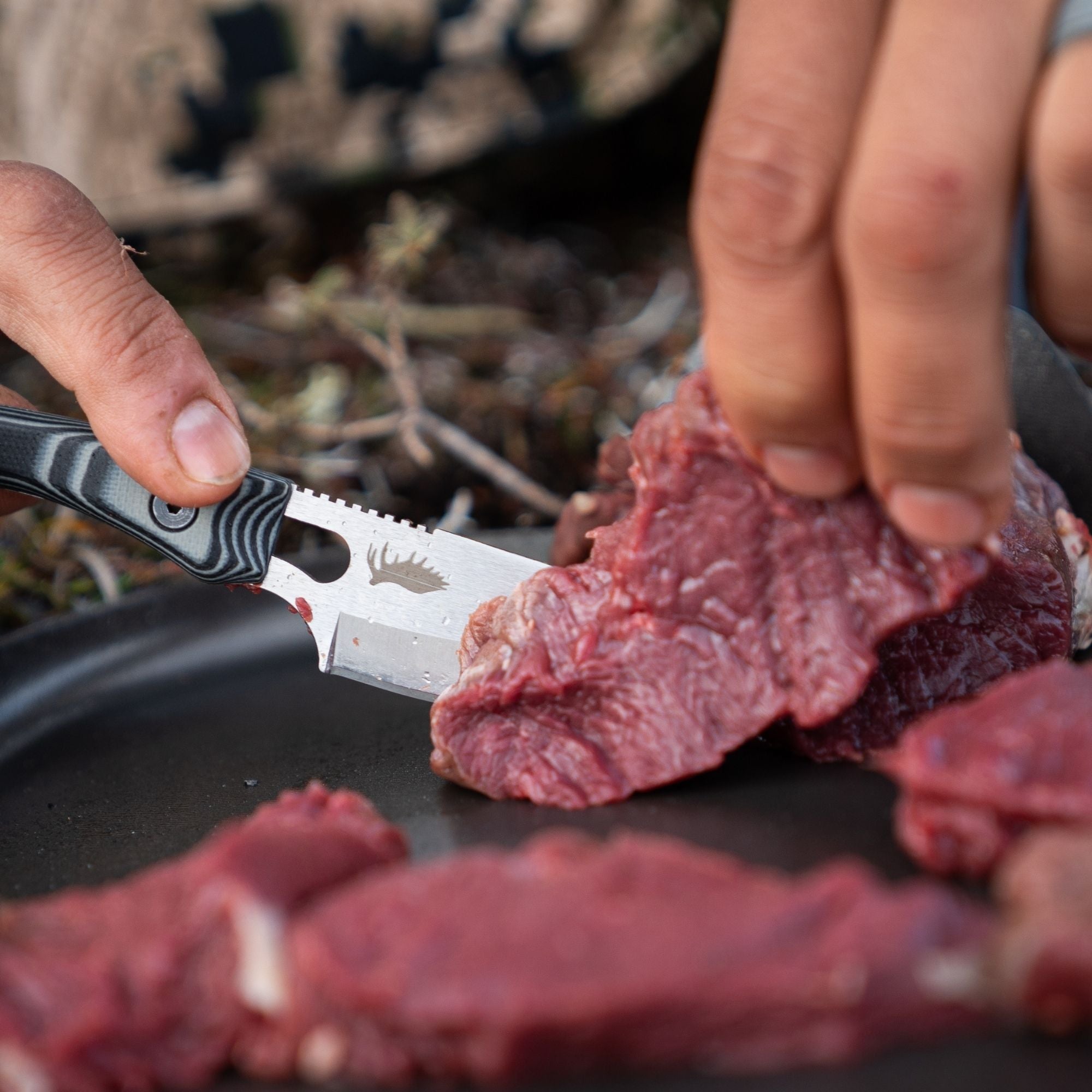Sound Testing Vented Blades
We recently completed noise testing with a sound engineer that develops high end microphones and does a lot of sound recording. He brought his equipment out to our test range and we set up four omni-directional microphones (measure sound equally in all directions) in a 2 foot circle and I shot through them with 13 different broadhead designs from 30 yards away.
His equipment has the ability to capture the raw sound amplitude vs. time. We then compared these graphs of sound amplitude vs. time on the different heads. There is some complicated mathematical work underway to quantify the exact differences, but I can give you a summary based on visually looking at the graphs.
There is a big spike in the sound when the bow shoots and then the noise level at the animal is very low until the arrow gets close. In fact, the noise level was nearly the same for all broadheads, fletching, and field points until about .01 seconds before impact. In the last .01 seconds (when the arrow is about 1-2 yards away) the sound flares up and you can see a difference between vented and non-vented broadheads with vented heads being louder.
Based on this, I believe an animal can react to the sound of the bow at the shot, but won't have time to react to any difference in noise level from the broadhead. For a 30 yard shot with a bow speed of 300 fps for instance, it takes the arrow 0.3 seconds to get to the animal. The sound of the bow gets to the animal in about 0.1 seconds, so they do have about 0.2 seconds to react to the sound of the bow. After hearing the sound of the bow, the arrow noise is quite low at the location of the animal until about .01 seconds before impact which is too late to react. I believe animals either react to the bow noise or they don't, but the broadhead noise doesn't matter. Also, we hear the noise of vanes and broadheads right away, since the arrow is at top speed when it leaves the bow and is very close to us.
His equipment has the ability to capture the raw sound amplitude vs. time. We then compared these graphs of sound amplitude vs. time on the different heads. There is some complicated mathematical work underway to quantify the exact differences, but I can give you a summary based on visually looking at the graphs.
There is a big spike in the sound when the bow shoots and then the noise level at the animal is very low until the arrow gets close. In fact, the noise level was nearly the same for all broadheads, fletching, and field points until about .01 seconds before impact. In the last .01 seconds (when the arrow is about 1-2 yards away) the sound flares up and you can see a difference between vented and non-vented broadheads with vented heads being louder.
Based on this, I believe an animal can react to the sound of the bow at the shot, but won't have time to react to any difference in noise level from the broadhead. For a 30 yard shot with a bow speed of 300 fps for instance, it takes the arrow 0.3 seconds to get to the animal. The sound of the bow gets to the animal in about 0.1 seconds, so they do have about 0.2 seconds to react to the sound of the bow. After hearing the sound of the bow, the arrow noise is quite low at the location of the animal until about .01 seconds before impact which is too late to react. I believe animals either react to the bow noise or they don't, but the broadhead noise doesn't matter. Also, we hear the noise of vanes and broadheads right away, since the arrow is at top speed when it leaves the bow and is very close to us.







